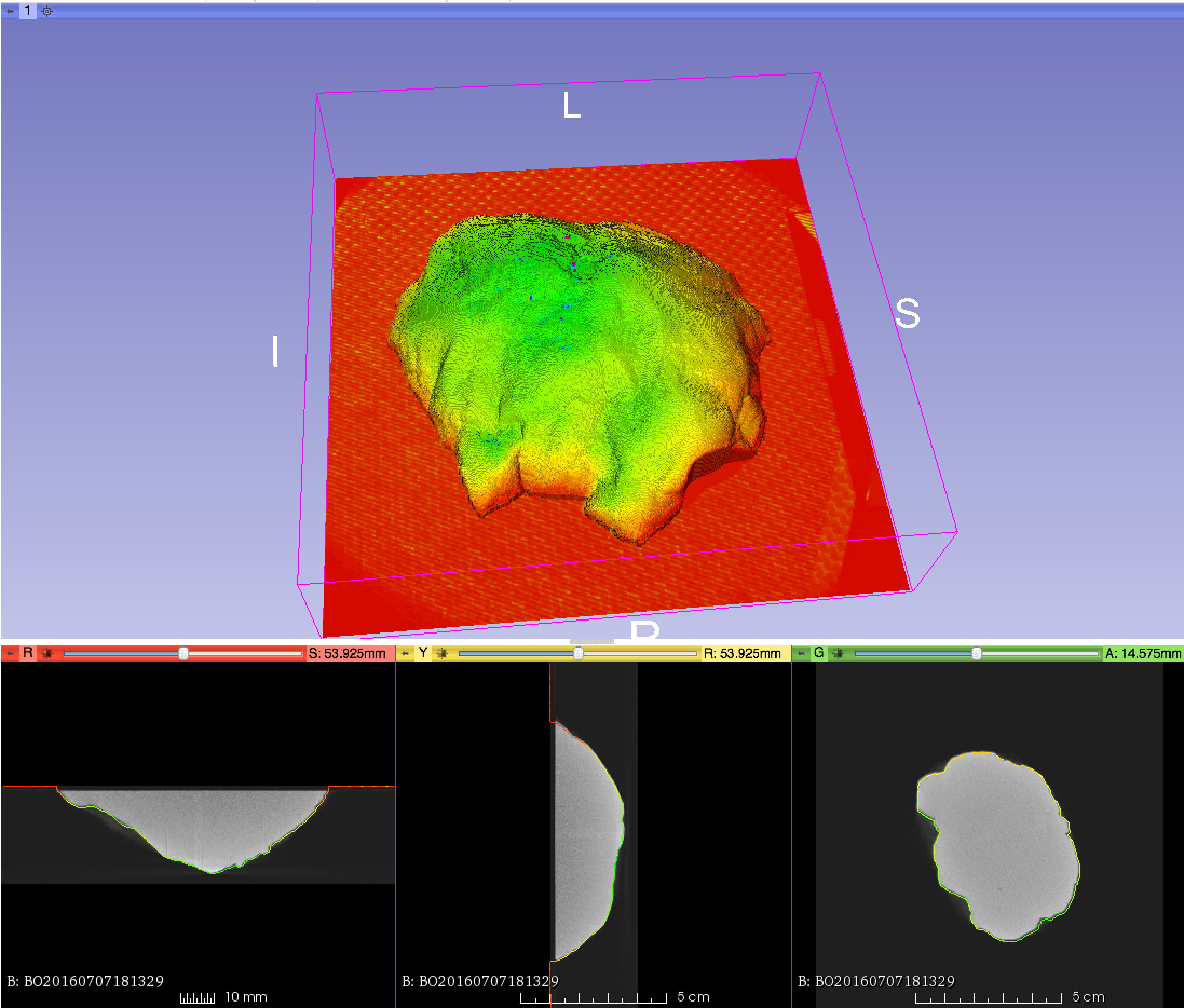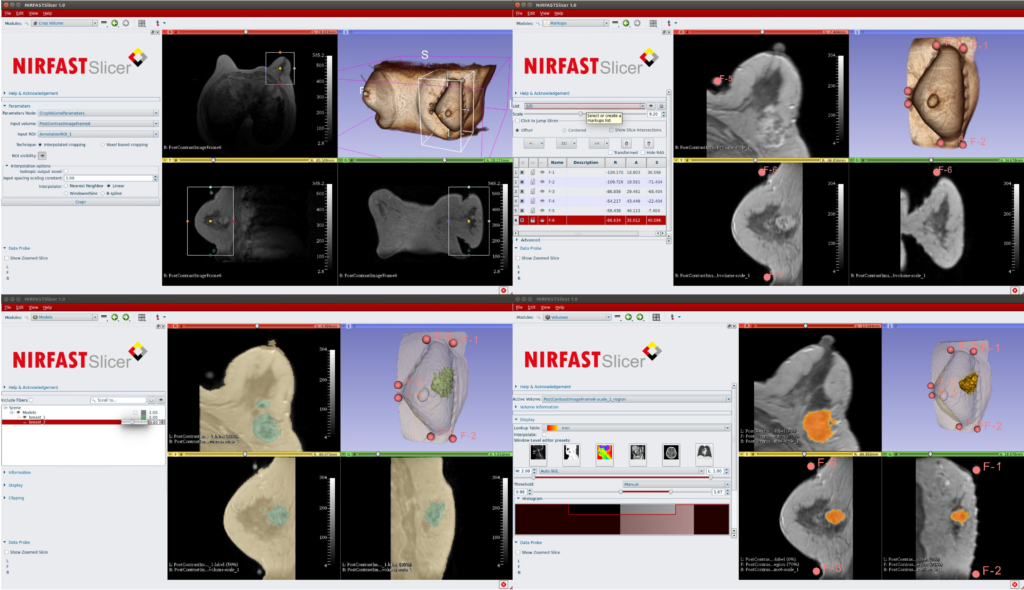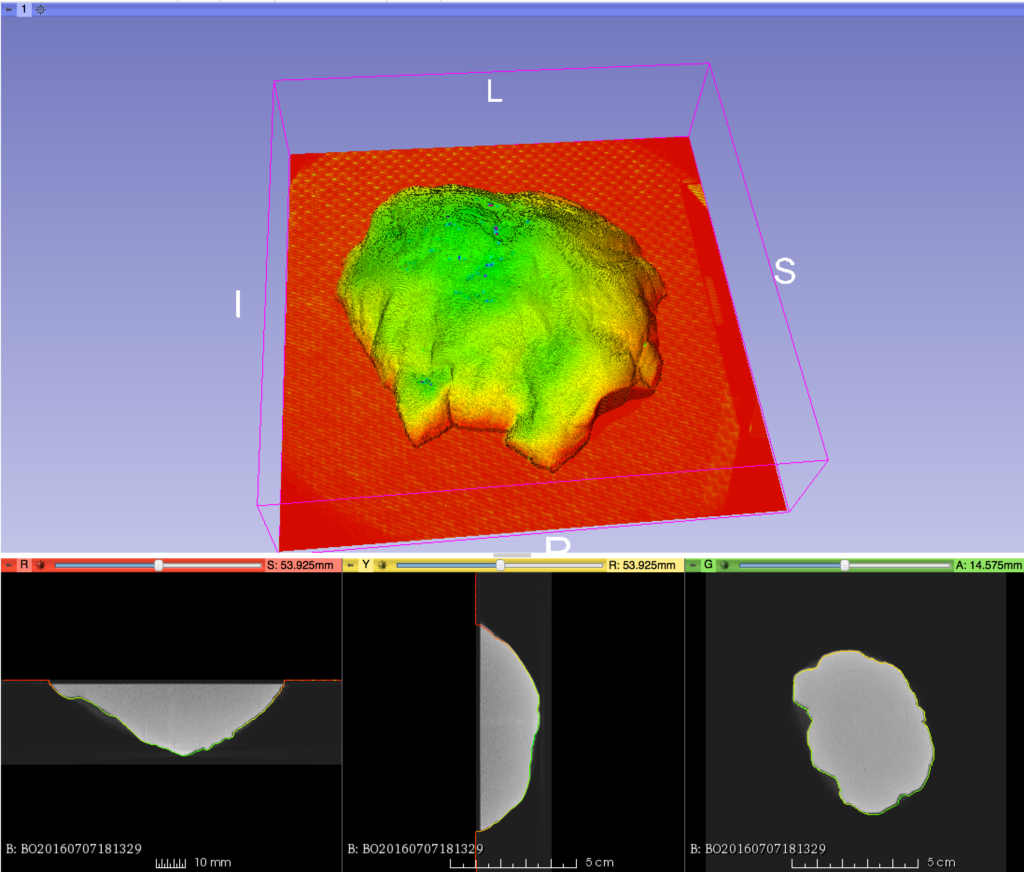Kitware customer highlight: Optics in Medicine Laboratory

Introduction
Kitware provides collaborative research, development, and custom development and technology-integration services for universities and research centers that work in the medical and biomedical business sectors. As part of a series highlighting many of the applications that Kitware has developed in collaboration with our customers, this post features our joint efforts with the Optics in Medicine Lab at Dartmouth University.
Optics in Medicine Laboratory: The Research Center
The Optics in Medicine Laboratory at Dartmouth University studies aspects of tissue spectroscopy and imaging using both visible and near-infrared light. The imaging technologies they develop are used to model various cancers of the breast, pancreas, brain, and bone. They also examine the use of photodynamic therapy – a non-invasive medical procedure that uses photo-activated drugs to target tumors – in cancer treatment, and research how this treatment method can be combined with other types of cancer treatments to maximize the effectiveness of therapy regimens. The lab is comprised of researchers based at the Thayer School of Engineering at Dartmouth, the Geisel School of Medicine at Dartmouth, and Dartmouth’s Arts and Sciences Graduate Programs.
The Optics in Medicine Laboratory has applied numerous technological developments to clinical problems in the detection, diagnosis, and treatment monitoring of breast cancer, including investigating the relationships between pathological and optical imaging biomarkers of disease and relating these signatures to the presence of cancer as well as combining diffuse optical imaging with breast MRI to recover/exploit the function/molecular information available in the optical signals. These successful efforts have been dependent on the NIRFAST software platform developed at Dartmouth.
Need: Why Dartmouth scientists came to Kitware
NIRFAST is an open-source MATLAB library developed by researchers in the Optics in Medicine Lab for modeling near-infrared spectroscopic (NIRS) light propagation and recovering volumetric images of optical biomarkers in tissue with a specific focus on diffusion modeling and reconstruction. Dartmouth initially came to Kitware because they needed software to generate 3D models from medical images which could then be used by NIRFAST. This lead to the development of NIRView, a customized version of VolView to visualize and segment 3D medical images, like detailed in the blog post Open Source Tools for Fast Segmentation and 3D Volume Mesh Creation from Medical Images for Tissue Optics.
Due to a need for more advanced image analysis and visualization capabilities resulting from NIRFAST’s expanding user base, NIRView was deprecated in favor of NIRFASTSlicer, a new application built on the more flexible 3D Slicer platform, which was presented for the first time during the NIRFAST workshop at the OSA Optical Biomedicals Optics 2016 conference.
The figure below shows an example of the NIRFASTSlicer workflow. NIRFASTSlicer allows for an image to be rendered and a region of interest identified (top left), the placement of landmarks identifying light sources and detectors (top right), multi-label segmentation and visualization of surface models (bottom left), and overlay of computed optical parameters on top of the 3D medical image (bottom right). To compute the optical parameters, NIRFASTSlicer passes segmented images to the NIRFAST MATLAB library for computation, the results of which are then loaded into NIRFASTSlicer for visualization. NIRFASTSlicer is available for download at www.nirfast.org.

In addition to the development of NIRFASTSlicer, Kitware has recently been working with a second group in the Optics in Medicine Laboratory. Dr. Brian Pogue and his student David M. McClatchy III are working with a system that can capture both a CT of an object as well as an image of the object’s surface at the same time. Kitware has aided their efforts by developing software to calibrate the camera and register the camera image to the CT. Using this software, they can create meshes of an object’s surface colored via the camera data and overlay it onto the CT as shown below.

Summary
For researchers, having the right tools is an important part of doing their work efficiently. By partnering with Kitware, scientists like the researchers at the Optics in Medicine Laboratory at Dartmouth University are able to leverage our expertise in image analysis, visualization, and software engineering, allowing them to focus on more effectively conducting their research. To learn more about how we can tailor solutions to meet your research needs, please contact kitware@kitware.com.
Hi there, could paraview also do these pieces of visualization?